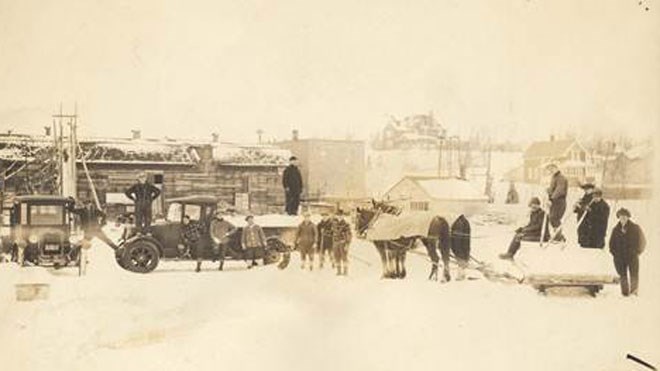Ido Vettoretti remembers a time when a game of road hockey in Copper Cliff could be interrupted by heavy air pollution.
“I grew up in the days when there were three stacks in Copper Cliff,” he said. “Playing ball hockey in the street, the emissions were so thick that sometimes you would lose the ball in the street.”
Vettoretti, a specialist with the Sudbury and District Health Unit's environmental health division, has made it his mission to share Sudbury's public health history, and show how far the city has come.
Since he started with the health unit in 1984, Vettoretti said Sudbury has made tremendous progress cleaning up the local environment.
“At one time there were no fish in Ramsey Lake,” he said. But today, people fish regularly from the boardwalk near Science North.
“Lake Nepahwin was a dead lake and essentially those stocks have come back,” Vettoretti added.
Air pollutants have decreased substantially since the days Sudbury was deemed North America's acid rain capital.
Compared to cities with heavy industry in southern Ontario, Sudbury's air quality is excellent, Vettoretti said.
To celebrate Sudbury's progress, and learn from the past, Vettoretti has undertaken a painstaking account of Sudbury's environmental history, going back to 1883, when Sudbury was only a Canadian Pacific Railway Outpost.
He presented a condensed version of that history at the health unit's board meeting Sept. 18.
According to Vettoretti's research, James Alexander Orr, the editor at the Sudbury Journal, and a city councillor, advocated for a board of health in Sudbury in 1891.
That year the city hired its first health inspector to deal with community sanitation.
In its early history, the village of Sudbury faced a number of health challenges as new immigrants died from diseases such as typhoid fever and smallpox in the 1890s.
The Sudbury Brewing and Malting Company, which later became Northern Breweries, was an early advocate for the improvement of Sudbury's drinking water in the early 1900s so it could improve the quality of its beer.
In its more recent history, the Sudbury and District Health Unit has participated in a number of far-ranging studies, including the largest study of a municipality's soils ever performed in North America in 2001.
In 2003, the health unit teamed up with the Mining Innovation Rehabilitation and Applied Research Corporation (MIRARCO) to study the impact climate change will have on Sudbury.
Vettoretti said the warming climate will result in more precipitation and the northern migration of some pests and lyme disease to northeastern Ontario.
“It's a continuing challenge to get climate change on the agenda,” he said.
Vettoretti said he hopes new health unit inspectors can learn from the past to help inform their decisions in the present.
“History provides some context for people who are young inspectors or working in the field,” he said.
